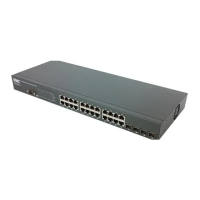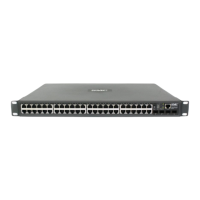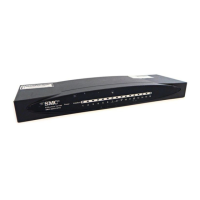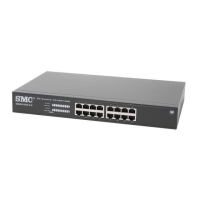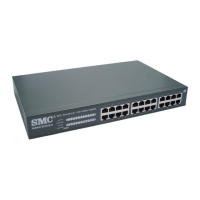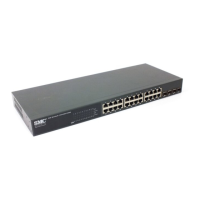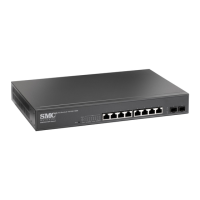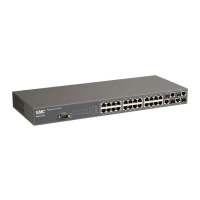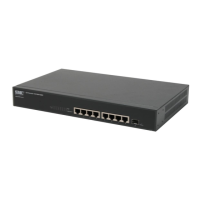Class of Service Configuration
3-147
3
CLI – The following example shows how to change the CoS assignments.
Enabling CoS
Enable or disable Class of Service (CoS). Command Attributes
• Traffic Classes – Click to enable Class of Service. (Default: Enabled)
Web – Click Priority, Traffic Classes Status.
Figure 3-86 Enable Traffic Classes
Selecting the Queue Mode
You can set the switch to service the queues based on a strict rule that requires all
traffic in a higher priority queue to be processed before lower priority queues are
serviced, or use Weighted Round-Robin (WRR) queuing that specifies a relative
weight of each queue. WRR uses a predefined relative weight for each queue that
determines the percentage of service time the switch services each queue before
moving on to the next queue. This prevents the head-of-line blocking that can occur
with strict priority queuing.
Command Attributes
• WRR - Weighted Round-Robin shares bandwidth at the egress ports by using
scheduling weights 1, 2, 4, 8, for queues 0 through 3 respectively. (This is the
default selection.)
• Strict - Services the egress queues in sequential order, transmitting all traffic in the
higher priority queues before servicing lower priority queues.
Console(config)#interface ethernet 1/1 4-116
Console(config-if)#queue cos-map 0 0 4-187
Console(config-if)#queue cos-map 1 1
Console(config-if)#queue cos-map 2 2
Console(config-if)#end
Console#show queue cos-map ethernet 1/1 4-189
Information of Eth 1/1
CoS Value: 0 1 2 3 4 5 6 7
Priority Queue: 0 1 2 1 2 2 3 3
Console#
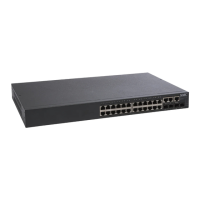
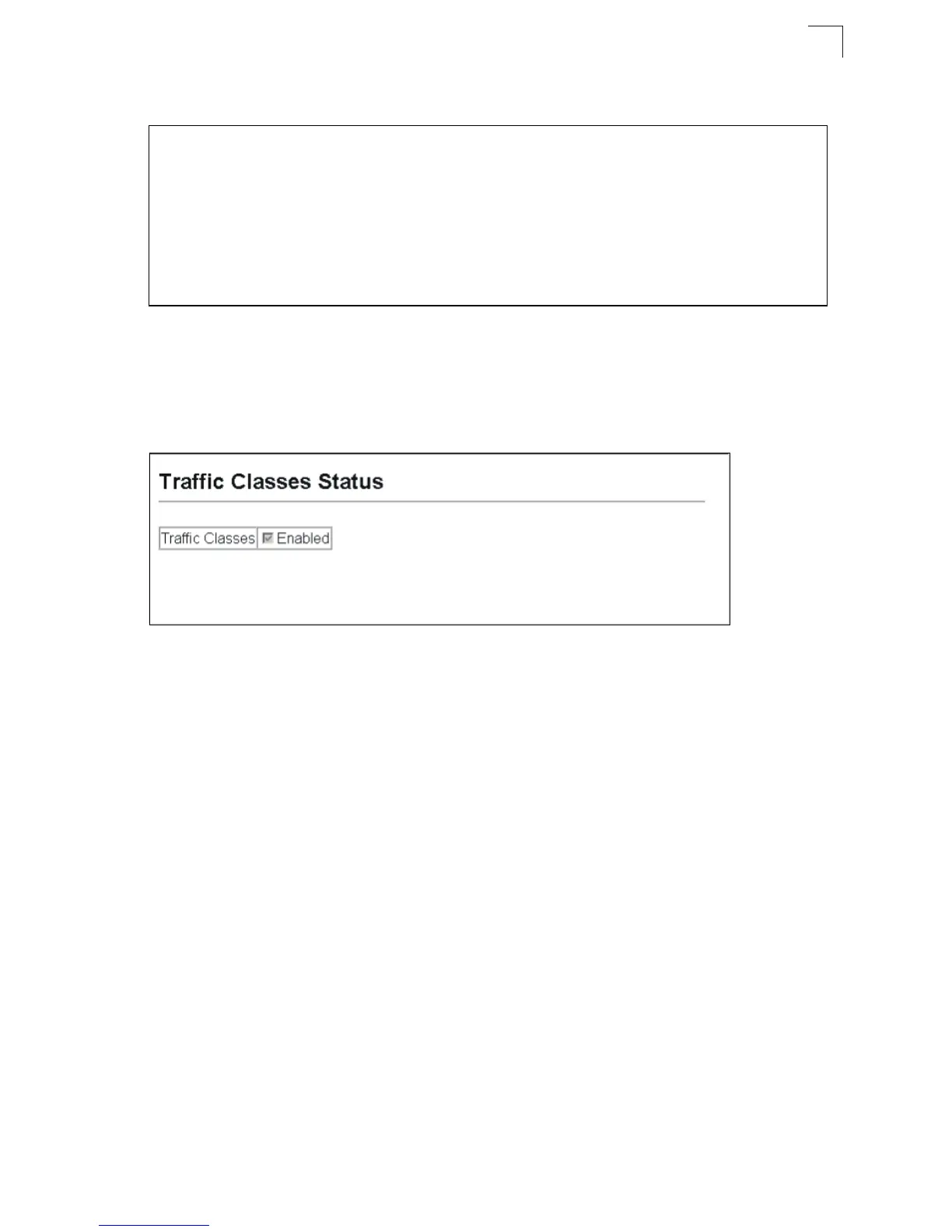